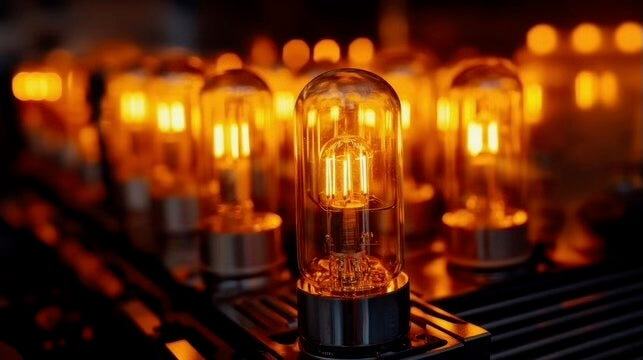
Why Vacuum Tubes?
Share
Vacuum tubes, despite being older technology, have been cherished by audiophiles for decades for their unique ability to enhance musical sound. While modern solid-state amplification is more common, tubes possess distinctive characteristics that make music sound richer and more lifelike.
One of the primary reasons tubes are preferred is the harmonic distortion they produce. In audio reproduction, distortion usually carries negative connotations—but not all distortion is bad; some of the right kind can actually be beneficial. Harmonic distortions produced by vacuum tubes are primarily even-order and are perceived as musically pleasing and in tune with the primary signal, thus adding a sense of warmth and fullness to the sound. Even-order harmonic distortion mimics the natural overtones found in live instruments and vocals, making the music sound more authentic and emotionally engaging. Solid-state amplification, by contrast, produces odd-order harmonic distortions, which can make the sound feel unnatural and harsher to the ear.
Tubes also excel in how they handle clipping, which occurs when an amplifier reaches the limits of its power capacity. In solid-state amplifiers, clipping introduces abrupt, harsh distortion that can be grating. In contrast, vacuum tubes clip more gently and smoothly. Instead of creating a jarring, sharp cutoff, tubes soften the transition into distortion. This smooth clipping allows the music to maintain its integrity, even at high volumes or when the amplifier is pushed to its limits.
Another aspect of tube amplifiers is their dynamic response. Tubes react more organically to quick changes in volume and intensity of a musical track, giving the sound more depth and dimension. They can convey subtle nuances in a performance, making the music feel more alive and dynamic. Solid-state amplifiers, on the other hand, can sometimes sound flat or sterile, as they don't interact with the music in the same way.
In terms of frequency response, tube amplifiers often produce a slightly warmer sound, especially in the midrange frequencies. This is the range where much of the human voice and many instruments reside. The warmth of tube amplification complements these frequencies, giving vocals and instruments a more natural, human quality. This is why listening to music through tube amplifiers feels closer to a live performance. The richness in this midrange is something that solid-state amplifiers, despite their technical accuracy, often lack.
There’s also a psychological element to the preference for vacuum tubes. Music lovers often describe tube sound as more emotional or involving. This could be due to the subtle imperfections and organic distortions introduced by tubes, which create a sense of presence and realism that sterile, more accurate digital amplification may miss. The slight inaccuracies in a tube's reproduction of sound can add to its charm, much like how vinyl records are appreciated for their warmth and character, despite also having measurable imperfections compared to digital formats.
While solid-state amplifiers are more efficient and cost-effective, these qualities do not necessarily translate to better sound quality. The technical perfection of solid-state systems often leads to a colder, more clinical sound, leading to listening fatigue over longer sessions. The very attributes that make solid-state amplifiers more practical—such as low distortion and high efficiency—can strip away the warmth, character, and emotion of the music.
Vacuum tubes, however, make music sound better by enhancing the natural harmonic structure of the sound and providing a warmer, more dynamic listening experience. Their unique qualities deliver an emotional connection to music that solid-state amplifiers often struggle to replicate.

